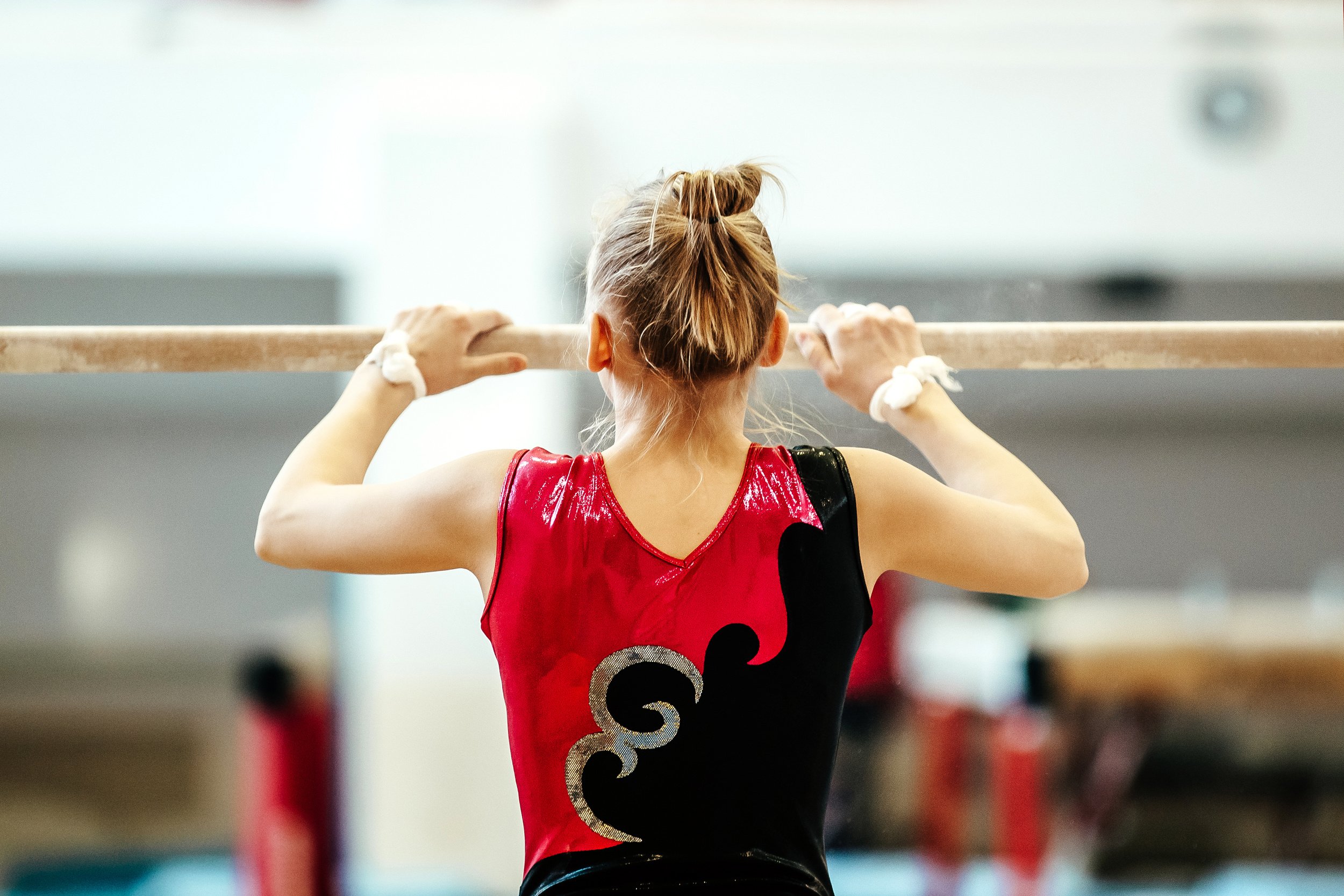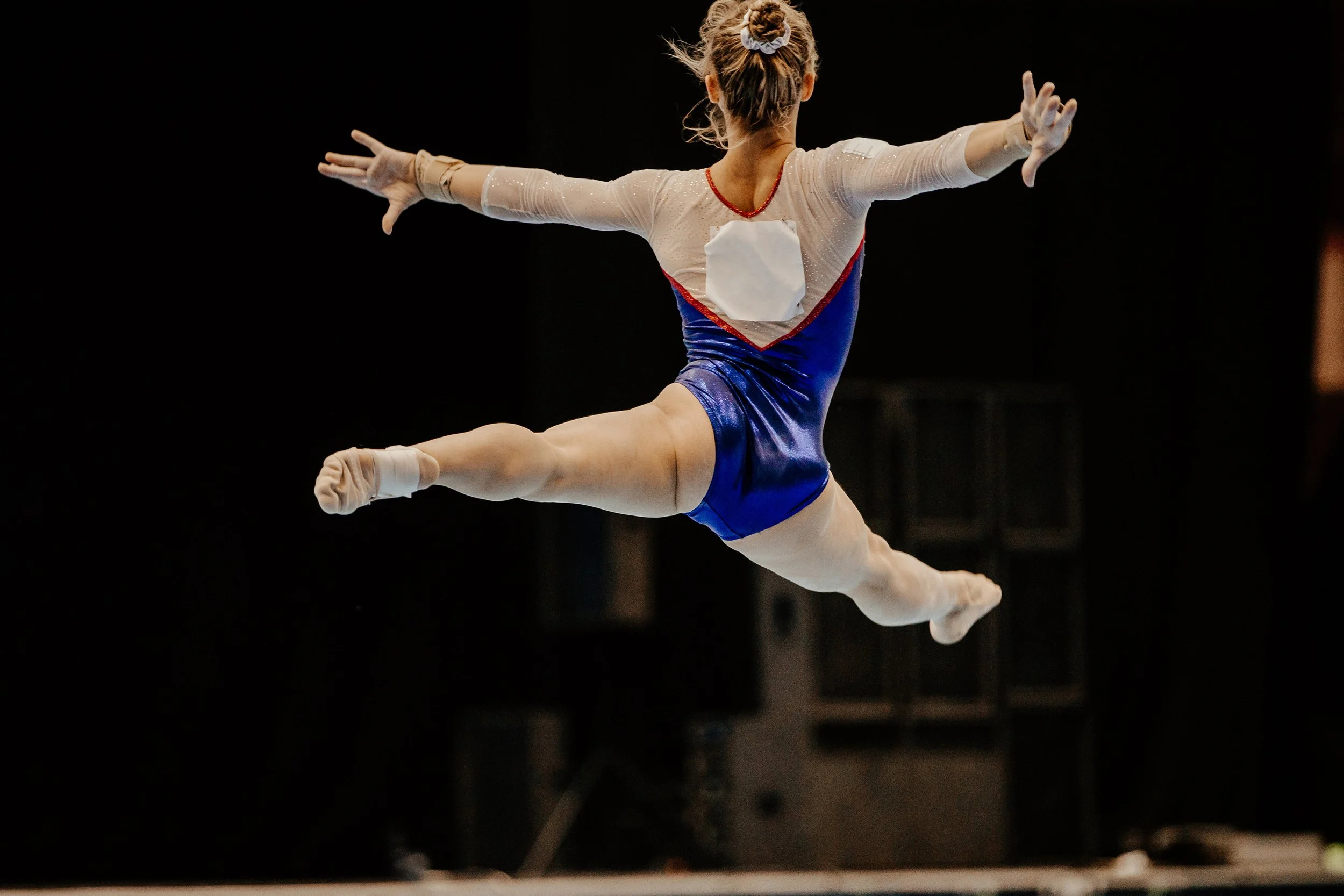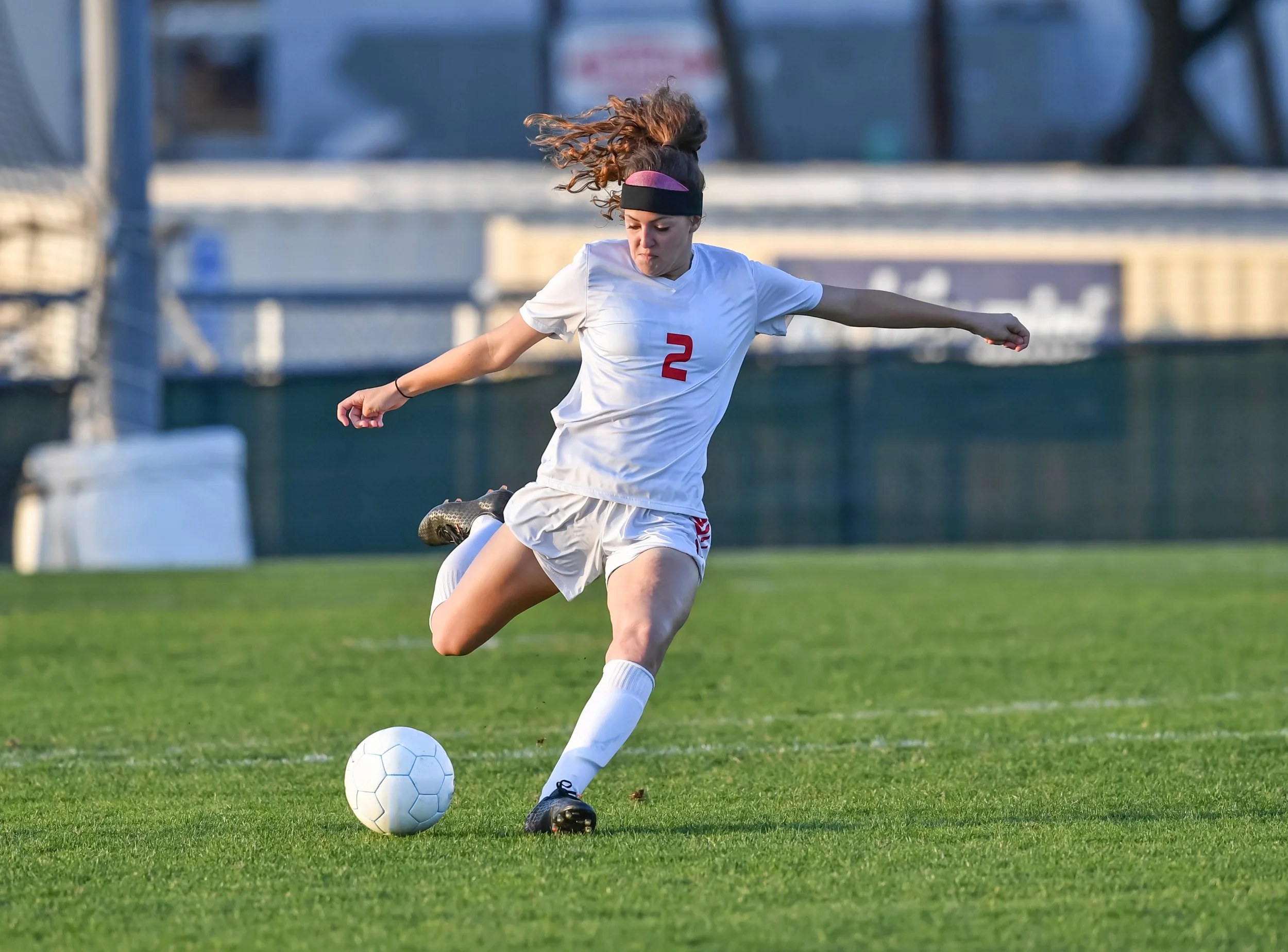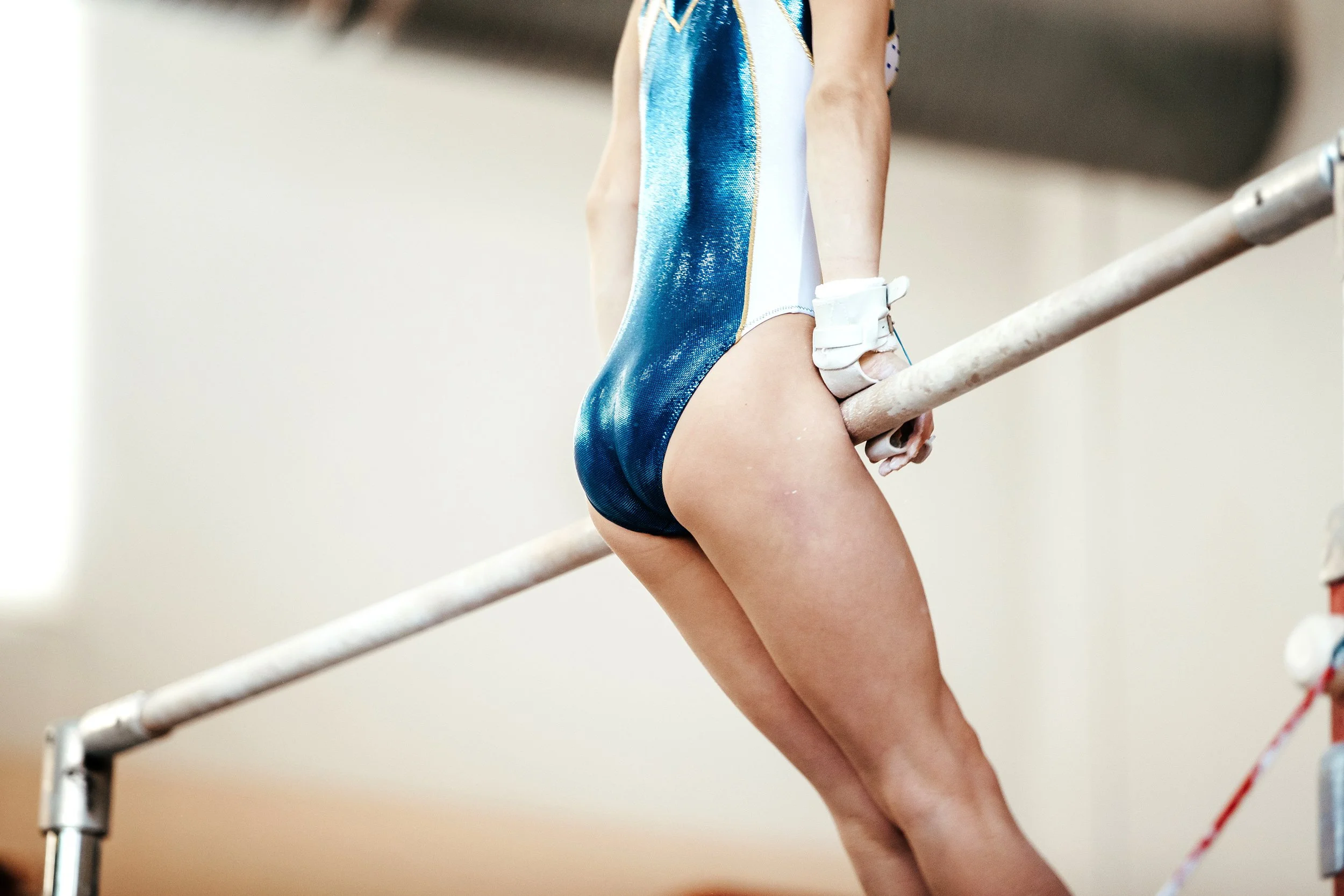Adolescent low back fractures, spondylolysis and spondylolisthesis.
It is well known in the sports world that ACL surgery, rehabilitation, and return to sport (10-12 months) can feel like an eternity for an adolescent athlete. The time away from sport, pain, and grueling rehab can be emotionally and physically hard on adolescents. Several ACL prevention programs are available to help prevent ACL tears in adolescent athletes. However, adolescent spondylolysis, an injury that by some estimates is more prevalent (6-11% of adolescent low back pain cases vs 3-6% for adolescent ACL tears), also has long recovery times. Frustratingly, it rarely gets the attention of coaches, parents, and athletes until it’s too late.
Spondylolysis (spondylo= vertebra, lysis= fracture) is estimated to occur as much as 25-60% in athletic populations (Herman et al., 2030 & Iwamoto et al., 2010). The most common age group for occurrence is 11-18 years old, with higher likelihoods of injury occurring during puberty and growth spurts. Adolescents today typically play multiple sports throughout the year, often overlapping with minimal to no rest between seasons. Sports involving high impact and spine loading, as well as trunk rotation and extension, have a higher incidence of spondylolysis. Research shows football, gymnastics, power lifting, diving, baseball, softball, hockey, basketball, and soccer tend to have an increased risk for this injury Selhorst, et al, 2019. When lumbar vertebrae are subjected to high load, extension (arching your back) and rotational stresses, without adequate rest between intense exercise, the pars interarticularis can start to develop stress/ fatigue fractures in the bone. The “pars interarticularis” is the portion of the lumbar vertebrae that connects the weight bearing lower and upper facet joints of the vertebrae. Minor stress and fatigue fractures can progress to worse, more significant cracks and even complete fractures with a vertebral slip (spondylolisthesis) (Masci et al. 2006, Lawrence et al. 2016).
As these injuries progress, they can become more painful to stand, sit, extend, rotate, side bend and flex the spine especially when playing sports. Timely diagnosis and activity modification are key (Masci et al. 2006). The more severe the injury and longer it has been present, the more difficult it can be to heal to full bony union. This may lead to significant time away from sport, persistent low back pain and disability, or increased risk of spinal arthritic change later in life (Masci et al. 2006). These characteristics make it imperative to understand the risk factors, pathomechanics, and timely diagnosis of persistent low back pain.
““One-half of all pediatric back pain in athletic patients is related to disturbances of the posterior elements including spondylolysis, which presents as low back pain aggravated by activity, frequently with minimal physical findings.” ”
Persistent low grade, low back ache in an adolescent that lasts for more than a month should be examined by a physician (Purcell & Michelli, 2009). As a parent, it can be common to think that your kids low back pain is to be expected when playing sports. “Of course, their back’s going to hurt if they are playing a sport or two, sitting with poor posture in school desks, hauling around those “huge backpacks”, and playing video games or on devices all day long?” But persistent, centralized low back ache, especially at rest, is anything but normal. Early diagnosis of spondylolysis can aid in a quicker recovery. Early diagnosis further improves chances of healing to full bony union 75-80% of the time, while delayed diagnosis and treatment drops the possibility of full bony healing to 25-27% or lower. (Selhorst et al., 2020). Rehabilitation and return to sport can take up to 5-9 months for a diagnosis of full fracture or symptomatic spondylolisthesis (listhesis= slip). Nearly all lumbar stress injuries and spondylolyses are treated conservatively, while some require surgery, albeit rare. External bracing, physical therapy, rest, and time off from sports are the most common prescription. Luckily, research shows that 85-93% of people with low back spondylolysis can return to their prior level of sport activity with rehabilitation, regardless of bony healing status (Iwamoto et al, 2010).
““Besides adequate rest and a great rehabilitation program, a supportive family and coach that value the athlete’s health first and foremost, regardless of wins and losses, is a vital component to recovery”. ”
We spoke to Dr. Garrett Hyman owner of Lake Washington Sport & Spine and he added to the discussion. “Athletes, and often their parents, are focused on rapid return to sport. Sometimes they arrive with unrealistic expectations about healing. Sometimes they’ve been given misinformation by coaches or friends or Dr. Google. It can be emotionally costly for me at times to counsel the athlete with a spondy since so often they emotionally struggle as I describe the rest required to heal. Partnering with a knowledgable physical therapist that uses a stepwise and organized functional rehabilitation program is so helpful for managing return to sport expectations.”
Physical therapy is key to restoring pain-free range of motion, identifying areas that are stiff or weak, and analyzing and correcting faulty movement patterns. Physical therapists prescribe mobility exercises (thoracic spine, hips, hamstrings, shoulders, ankles), appropriate strengthening exercises, teach proper sitting and standing posture, and help restore deep inner core strength, motor control and endurance (multifidus, abdominals, pelvic floor and diaphragm muscles). Additionally, PT’s with guidance from the patients referring physician, also help parents, coaches, and players by providing functional return to play testing and graded return to play programming. They can also give advice on sleep hygiene, appropriate sport spacing, stress relieving techniques, and in-season/ off-season fitness, conditioning, and performance training.
“Pain management is easy and straightforward typically. The pain should resolve usually within 2-4 weeks of rest. I advise patients that most bone healing takes ~6 weeks — my conservative approach is to start that 6 week clock as soon as the athlete is pain free”
Today’s adolescent athletes are at an increased risk of lumbar spondylolysis. Playing back-to-back sports year-round, one-sport specialization, being musculoskeletally immature, and experiencing growth spurts during sports seasons, all potentially increase the risk for lumbar spondylolysis. Shining a light on the risk factors and occurrence of lumbar spondylolysis as much as we do for adolescent ACL tears, could hopefully drive more research and prevention programs to prevent them from occurring. Dr. Hyman adds, “Embrace the team approach to spondy recovery. Patience and a long term view of spinal health is required. The goal is returning the athlete to sport, but with an understanding that mismanagement of a spondy, at its worst, could lead to a case of difficult to manage chronic low back pain. Our job as the healthcare team is to see that forest through the trees and advocate for the patient accordingly.”
Estimated, general average recovery/ rehabilitation timelines for spondylolysis before return to activity:
Stress fracture= 3-4 months
Partial fracture= 4-6 months
Full fracture= 6-9 months
Things to listen and look for with your athlete with low back/ spondylolysis risk:
1. Low back pain at rest
2. Pain during, after and into the next morning after exercise
3. Pain that worsens with more play and does not get better with a warm-up
4. Persistent hip, knee, shin, ankle pain/ ache that is not getting better after several weeks
5. Significant growth spurt over the last 6-12 months
6. Low back pain starting after a series of all-weekend long tournaments
7. Your athlete takes a break from sports for several weeks, their low back pain goes away, but as soon as they re-engage in their sport again, the pain is back just as severe as before their time away
8. Pain and guarding with trunk extension (arching), rotation or side bending that prevents full range of motion. Repeated attempts at performing these movements equals worsening centralized low back ache
9. Feelings of weakness, numbness and tingling in their lower limbs, pain that runs into their hip, down the back of their leg or into their lower leg and foot.
“In 33 years of treating spondys, I haven’t seen any rehab protocol that is more effective than multifidi training/ deep core strengthening. I’ve seen many patients fail other rehab protocols , unable to return to sport painfree, and subsequently succeed with strengthening the multifidus and maintaining that strength.”
There are several areas that a parent can intervene in their kids’ athletic lives to reduce the risk of low back injury and spondylolysis.
1. Thoroughly investigate your children’s complaints of persistent low back pain. See a Dr if low back pain persists more than a few weeks.
2. Make sure your kids have plenty of pre-season conditioning before their season starts. Have them take part in specific conditioning/ weight training that prepare them for their season (mobility, strength, endurance, power, agility). Kids can start weight training as early as 7-8 yo per American Academy of Pediatrics
3. Will they be ready for 5-6 practices per week? For several months of games and weekend long tournaments?
4. Avoid specialization in one sport. Allow your kids to explore other sports with different movement patterns and variability. Allow for time off between sports to recuperate mentally and physically
5. Think about developing their “athleticism” not their “sport”, provide opportunities to develop body awareness/ control, balance, flexibility and agility.
6. Track and record their height. Consider activity modification and spacing out sports if your kid is experiencing or recently experienced a growth spurt.
7. Provide plenty of rest and consistent bedtimes
8. Ensure a well-rounded diet that meets your athlete’s energy, nutritional, and tissue healing needs for intense sport
9. Hydrate, hydrate, hydrate
10. Provide outlets and communication to discuss feelings of anxiety, stress, and worry
AUTHOR:
Joe Nance, PT, MPT, OCS, COMT, FAAOMPT, ATC
CONTRIBUTORS:
Dr. Mimi Johnson, MD
Sports Medicine Physician
Dr. Garrett Hyman, MD
Physiatrist and owner Lake Washington Sport & Spine
Dr. Brad Shoup, MD
Family Practice Physician
Dr. Yung Lee, DO
Physiatrist
Ben Wobker, PT, MSPT, CSCS, CFSC, SFMA





